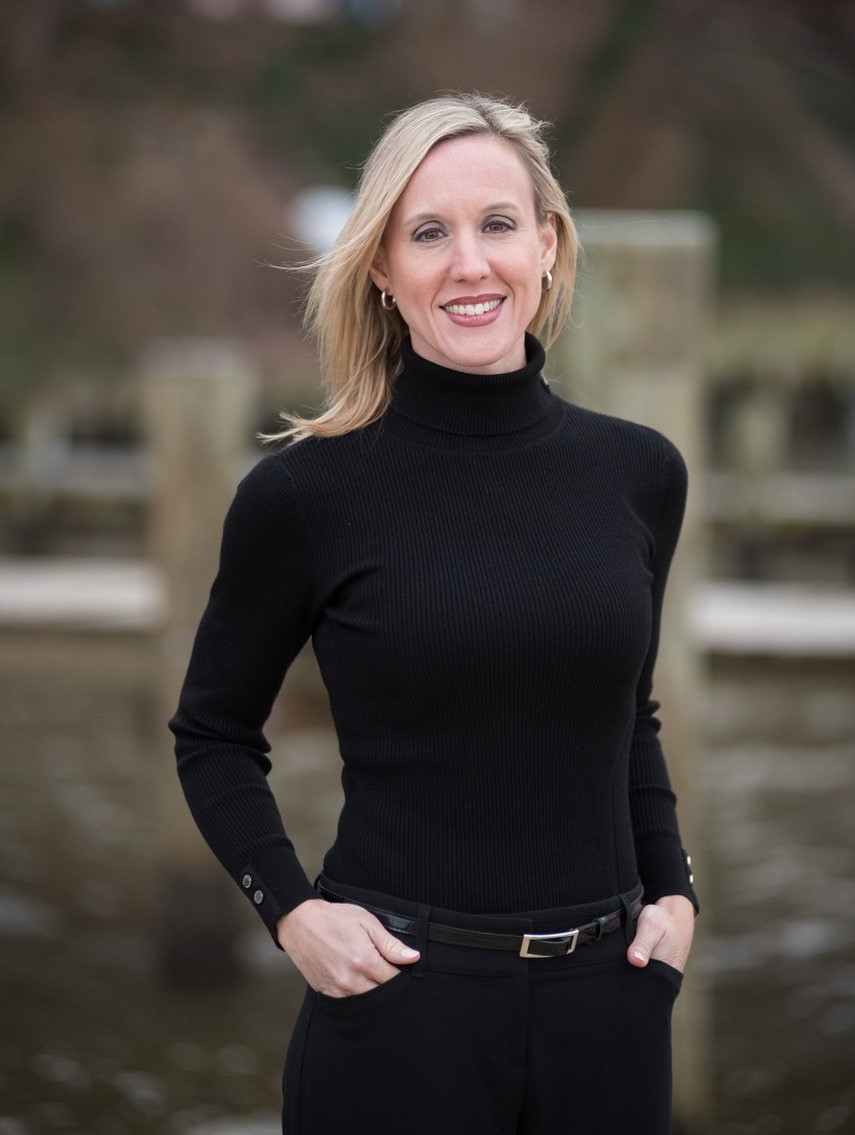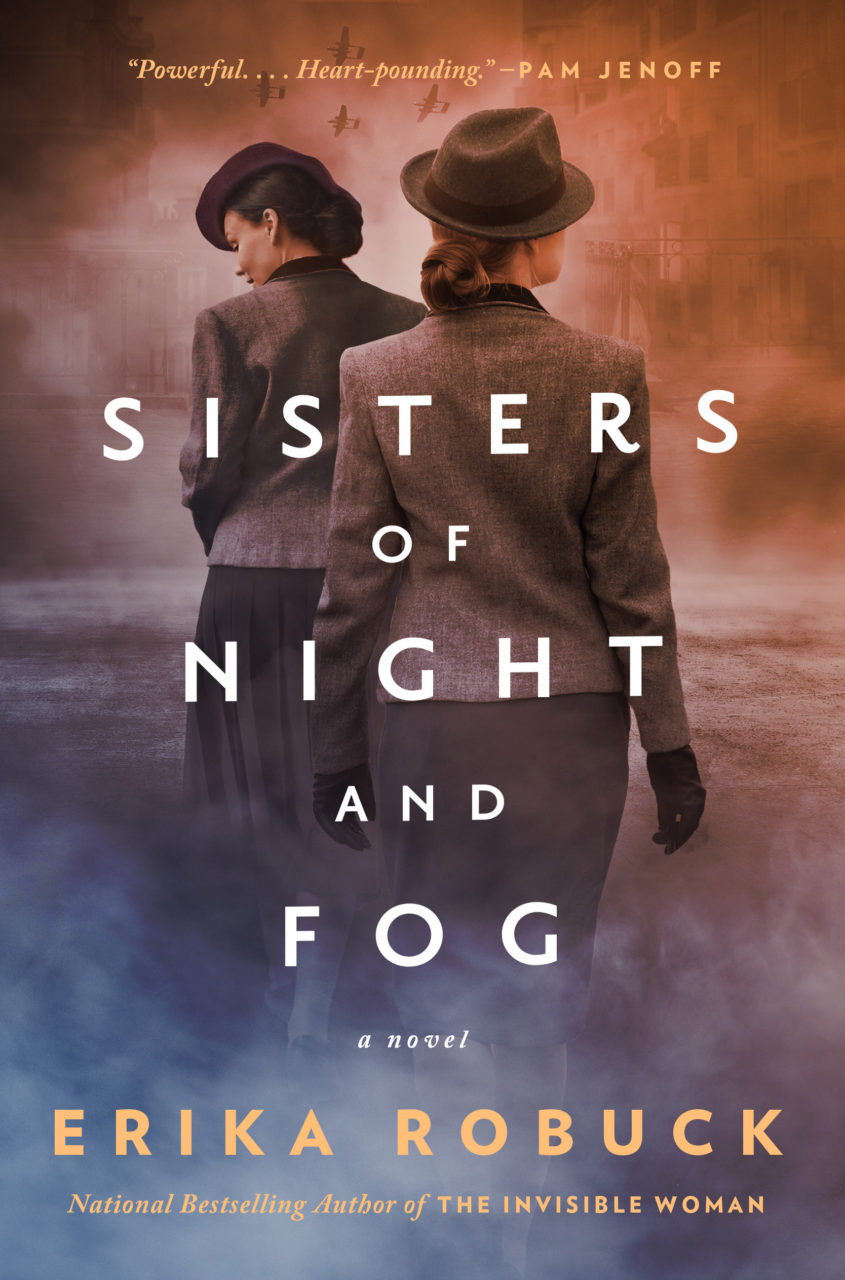
We are delighted to host Erika Robuck at 6:30pm on Wednesday, March 23, in-person, outdoors at Hugh’s View on the roof of The Studios of Key West (register here). Robuck will be discussing her newest historical novel, SISTERS OF NIGHT AND FOG (Berkley). She is the bestselling author of novels including THE INVISIBLE WOMAN, and store favorite HEMINGWAY’S GIRL.
We had the opportunity to ask a few questions in advance of her upcoming event.
Q: Is there a short excerpt that you think works well to introduce SISTERS OF NIGHT AND FOG?

A: I chose the following scene, at the start of the German occupation of France, because it felt relevant to the way the beginning of the pandemic felt. The start of rationing, the restriction of movement, and the disbelief were unsettlingly relatable.
“It takes many cuts before she comprehends the truth: France is bleeding out—sliced with a mortal blow—and with it, Virginia’s old life is dying.
Like the early days of grieving a loved one, Virginia awakens each morning not knowing, but rather having to remember. That remembering brings fresh pain with each wave, and the waves are drowning her. She thinks it will be better when she simply knows the world has turned upside down—to have the thing dead and buried and not have to recollect. Then maybe she can move on. But there’s no knowing, at least not now. There is no certainty and no timetables, and that’s the hardest part. Though she knows it’s not for her ultimate good, Virginia continues to grasp the ever-vanishing vapors of the memories of before, but they’re getting increasingly hard to grasp.”
SISTERS OF NIGHT AND FOG
Q: How do you do your research? Has the pandemic disrupted or changed how you work?
A: My research process usually begins with visits to sites important to my story. Because of the pandemic, and the difficulty of traveling overseas, I had to settle for books, YouTube videos, interviews, and Google Earth, all of which are surprisingly helpful (and economical). I tend to begin by reading nonfiction about the subjects, events, and locations. Then I moved to archival material and interviews of the subjects or their loved ones. If there is any first person or autobiographical writing, that is my last stop in getting to know the characters before I can inhabit them to write them.
Edit note: Erika Robuck made a great interactive map of key locations from SISTERS OF NIGHT AND FOG? Check it out at https://bit.ly/3vhS0k2
Q: I saw a fun teaser on your Facebook page, involving vinyl records. Can you tell us anything about your current work-in-progress? If it is indeed, a near-past historical, will this be the first time you have set a story post-WWII?
A: Yes, my new work in progress is a dual period, multigenerational family drama—moving between 1978 and the 1930s—tied together by one of the most studied and debated artifacts of all time. My first, self-published novel, was also a dual period, multigenerational family drama that took place partly in the present day and in the 1800s. I love working in this form because it ties the past to the present in interesting ways, and creates natural suspense as the reader moves back and forth in time.
Q: What’s your favorite thing to do when visiting Key West? What’s one thing visitors should not miss?
It’s hard for me to answer this question, because I want to say so much. Key West is my home away from home. Aside from visiting Books & Books to find that perfect vacation read, my heart turns to The Hemingway House. You don’t have to like Hemingway to be enchanted by the home, gardens, and cats.
Q: What are you reading and recommending these days?
A: I recently rediscovered my love of Rosamunde Pilcher, the queen of multigenerational family dramas, and have been recommending WINTER SOLSTICE to everyone I meet. I also loved the re-released LOOKING FOR TROUBLE: THE CLASSIC MEMOIR OF A TRAILBLAZING WAR CORRESPONDENT, by Virginia Cowles (out in August). From the Spanish Civil war to the London Blitz, readers are travel companions on the most astonishing pre-WW2 itinerary imaginable. Finally, I loved THE PERSONAL LIBRARIAN, by Marie Benedict and Victoria Christopher Murray. It tells the story of JP Morgan’s dazzling, brilliant librarian, Belle da Costa Greene, whose secret—that she is a Black woman who passes for white—could destroy both her personal and professional life. It was incredibly beautiful and eye opening.
